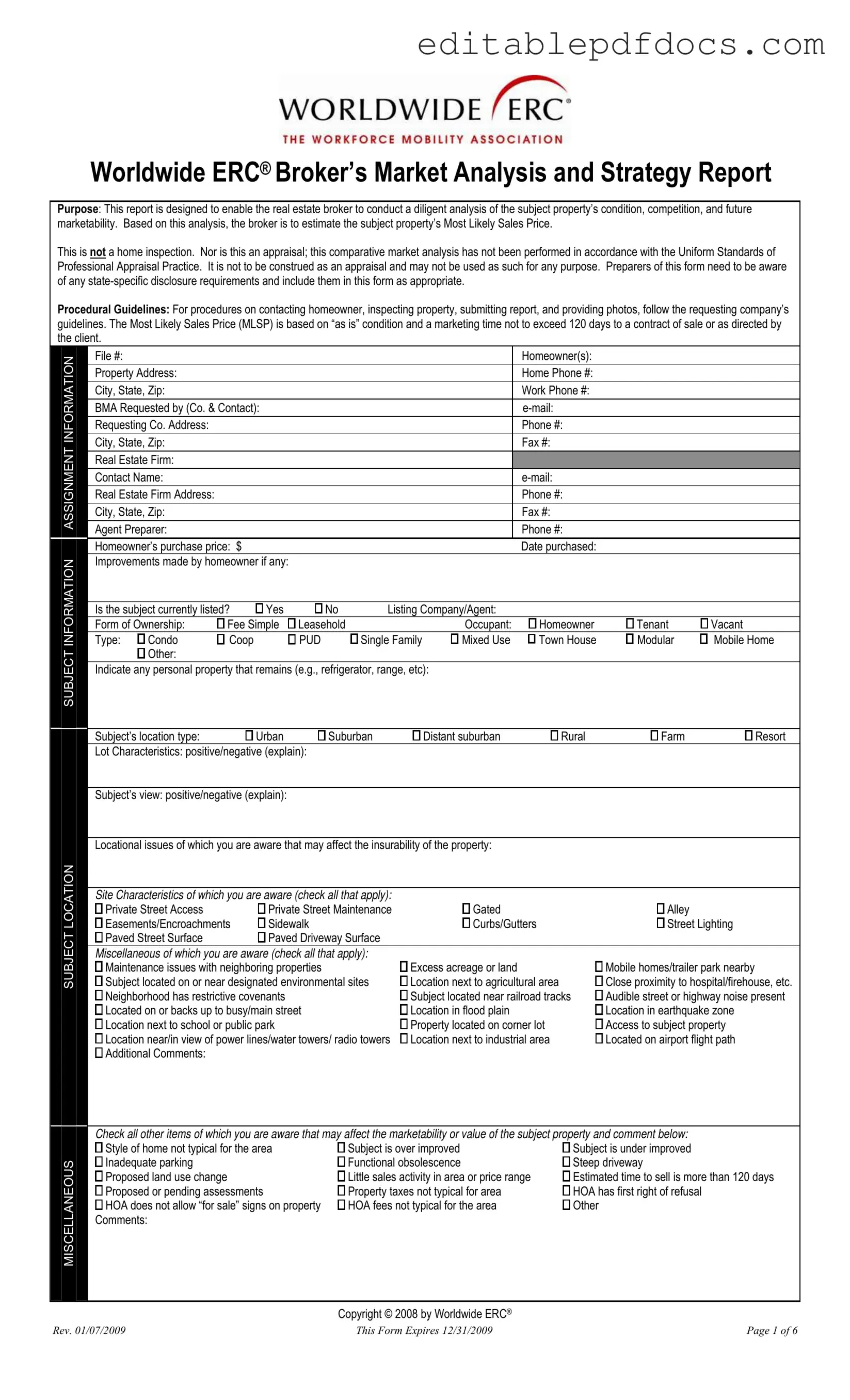Fill a Valid Erc Broker Market Analysis Template
The Worldwide ERC® Broker’s Market Analysis and Strategy Report is a crucial tool for real estate brokers, enabling them to assess a property's condition, competition, and future marketability. This report helps brokers estimate the Most Likely Sales Price based on a thorough analysis, though it is important to note that it is not an appraisal or home inspection. For those looking to navigate the complexities of property valuation, filling out this form is a valuable first step—click the button below to get started.
Open Editor Now
